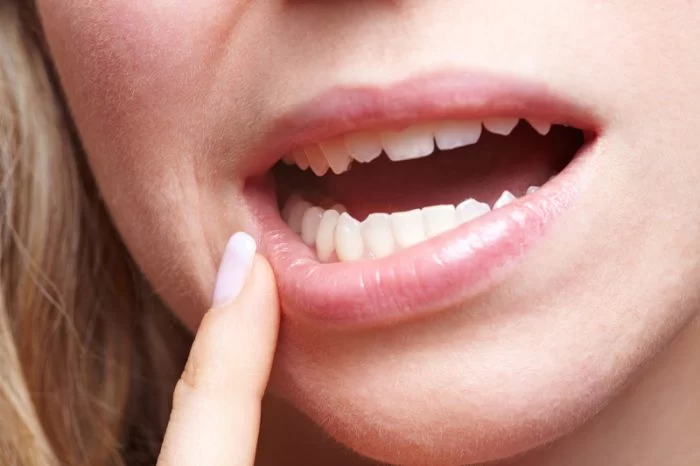
- 1-Understanding Gum Health and Its Role in Overall Well-Being
- 2-How Good Oral Hygiene Contributes to Healthy Gums
- 3-Common Gum Issues Linked to Poor Oral Hygiene
- 4-Real-Life Cases of Gum Health Improvements Through Good Oral Hygiene
- 5-Tips for Maintaining Healthy Gums Through Oral Hygiene
1. Understanding Gum Health and Its Role in Overall Well-Being
Healthy gums are the foundation of a healthy smile. They provide support for your teeth and help maintain the overall function of your mouth. Gum disease, such as gingivitis and periodontitis, can lead to serious health complications if left untreated. In fact, research has shown that gum disease is linked to other systemic health problems, such as heart disease, diabetes, and even respiratory issues. By maintaining good oral hygiene, you not only promote gum health but also protect your overall health.
2. How Good Oral Hygiene Contributes to Healthy Gums
Good oral hygiene is the most effective way to keep your gums healthy. The main goal is to remove plaque—the sticky, colorless film of bacteria that forms on your teeth and gums. If plaque is not removed, it can harden into tartar, which can only be removed by a dental professional. Over time, the bacteria in plaque and tartar can irritate and infect your gums, leading to gum disease.
- Brushing: Brushing your teeth twice a day with fluoride toothpaste helps remove plaque and food particles from your teeth and gums.
- Flossing: Flossing once a day cleans between your teeth, where a toothbrush can’t reach, and prevents plaque buildup.
- Mouthwash: Using an antimicrobial mouthwash can help reduce bacteria in your mouth and give your gums an extra layer of protection against infection.
- Regular Dental Checkups: Regular visits to your dentist for professional cleanings and exams help catch gum issues early and maintain the health of your gums.
By committing to these good oral hygiene practices, you can ensure your gums remain strong, healthy, and free of disease.
3. Common Gum Issues Linked to Poor Oral Hygiene
When oral hygiene is neglected, several gum issues can arise. Understanding these problems is crucial for recognizing early signs of gum disease and taking action to prevent it:
- Gingivitis: The earliest stage of gum disease, gingivitis is caused by plaque buildup and results in red, swollen, and bleeding gums, especially when brushing or flossing. Fortunately, it is reversible with proper oral care.
- Periodontitis: If gingivitis is left untreated, it can progress into periodontitis, a more severe form of gum disease that leads to gum recession, tooth mobility, and even tooth loss.
- Receding Gums: Gum recession occurs when the gum tissue wears away, exposing the tooth root. This can lead to tooth sensitivity and an increased risk of decay.
These issues underscore the importance of good oral hygiene for maintaining healthy gums and avoiding more severe problems down the line.
4. Real-Life Cases of Gum Health Improvements Through Good Oral Hygiene
Real-life examples highlight the transformative effects of good oral hygiene on gum health. For instance, Sarah, a 40-year-old teacher, noticed her gums were bleeding during brushing. After incorporating better brushing techniques, daily flossing, and using an antibacterial mouthwash, her symptoms significantly improved. Within a few months, her gums were no longer bleeding, and she was free from gingivitis.
Another example is James, a 55-year-old businessman, who had been struggling with gum recession. After attending regular dental checkups and switching to a more consistent oral care routine, he experienced less gum recession and an overall improvement in his gum health. His dentist also provided professional cleanings that helped remove stubborn tartar, promoting healthier gums.
These cases demonstrate that with consistent oral hygiene practices, it is possible to improve or even reverse early-stage gum issues and maintain optimal gum health.
5. Tips for Maintaining Healthy Gums Through Oral Hygiene
To ensure your gums stay healthy, here are a few additional tips to help maintain good oral hygiene:
- Use a Soft-Bristled Toothbrush: A soft-bristled toothbrush helps protect your gums from irritation and damage, especially when brushing along the gumline.
- Avoid Smoking: Smoking is a major risk factor for gum disease and can make it more difficult for your gums to heal. Quitting smoking significantly reduces your risk of gum disease.
- Stay Hydrated: Drinking plenty of water helps wash away food particles and bacteria, preventing dry mouth, which can contribute to gum disease.
- Eat a Balanced Diet: Eating foods rich in vitamins and minerals, such as vitamin C and calcium, promotes healthy gums and teeth.
By incorporating these habits into your routine, you can keep your gums healthy and enjoy a lifetime of good oral health.







 White Hill Dental4.0 (153 review)
White Hill Dental4.0 (153 review) Fair Lawn Periodontics & Dental Implants4.0 (191 review)
Fair Lawn Periodontics & Dental Implants4.0 (191 review) Aspen Dental - Council Bluffs, IA4.0 (650 review)
Aspen Dental - Council Bluffs, IA4.0 (650 review) Smile Central Dental4.0 (506 review)
Smile Central Dental4.0 (506 review) Diamond Braces Orthodontist: Braces & Invisalign5.0 (1 review)
Diamond Braces Orthodontist: Braces & Invisalign5.0 (1 review) Priya Mathew, D.M.D.0.0 (0 review)
Priya Mathew, D.M.D.0.0 (0 review) The Importance of Oral Health Education During Pregnancy for a Healthy Pregnancy
The Importance of Oral Health Education During Pregnancy for a Healthy Pregnancy Best Tips for Brushing Your Teeth Properly for Healthy Gums: Essential Techniques for Oral Health
Best Tips for Brushing Your Teeth Properly for Healthy Gums: Essential Techniques for Oral Health Why Skipping Dental Checkups Can Lead to Bigger Oral Health Problems
Why Skipping Dental Checkups Can Lead to Bigger Oral Health Problems Advantages of Porcelain Dental Restorations
Advantages of Porcelain Dental Restorations How Can Diabetes Cause Tooth and Gum Problems? Preventing and Managing Oral Health Issues
How Can Diabetes Cause Tooth and Gum Problems? Preventing and Managing Oral Health Issues Healthy Habits for Promoting Good Oral Health and Hygiene: Tips for a Healthy Smile
Healthy Habits for Promoting Good Oral Health and Hygiene: Tips for a Healthy Smile